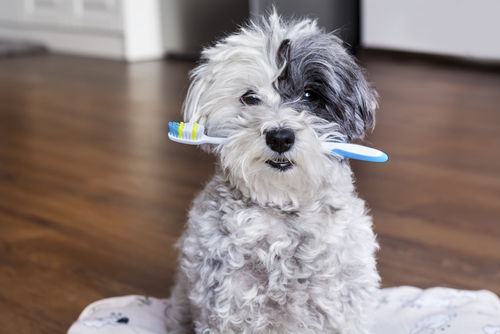Anesthesia-Free Dentistry…Is it worth it?
- jocelyn9918
- Jan 16, 2020
- 2 min read
Updated: May 21, 2020

Oral care for our pets is essential for the overall health of each individual. Animals use their mouths and teeth for many things including eating, playing, defending themselves, and grooming. It is important to consider that like us, pets need dental care, too – and you’ll notice that at your pet’s annual examination one of the first things a veterinarian will do is assess the teeth of your animal.
There are many ways to keep your pet’s teeth in check! Some options may include teeth brushing, dental chews, dental food and routine dental care at your veterinary clinic. Preventative dental care not only helps to preserve the teeth, but also reduces the costs associated with dentistry procedures.
A common question that seems to come up for us is whether or not anesthesia-free dental cleanings are effective. A dental cleaning without anesthesia would be similar to a cleaning we, as humans, would get at a dental office while awake. Most veterinary dental procedures that are recommended to our pets involve an anesthetic or sedation to allow the pet to have a full cleaning while “sleeping”.
So why would we choose a dental cleaning for our pet that involves no anesthesia? Many people speculate that not only does it save time and money, it may also become a routine procedure that can help keep the teeth white and clean in appearance. So if an anesthesia free dental is so easy and cost effective, why bother putting your pet under an anesthetic to have such a procedure done?
The major disadvantage to anesthesia-free dental cleaning is the inability to clean under the gum line of each tooth, or probe each tooth thoroughly to check for periodontal pockets and disease that settles under the gum line. Having your pet under a general anesthetic allows us to radiograph the teeth, tooth roots and jaw bone. It allows us to perform a thorough dental assessment, as we need the patient to be very still for an extended period of time. In a patient that is under an anesthetic, we can safely place a tube into the trachea to allow for a protected airway and avoid any chance of accidental inhalation of water and other debris during the procedure. The patient has adequate pain control while “sleeping” and we are able to examine, extract and treat any teeth that are diseased or have abnormalities present.
All in all, the ability to place an animal under an anesthetic allows us to be much more thorough with our patients. We are able to remove or treat any diseased teeth on the spot and don’t have to risk leaving any diseased teeth behind without knowing it. This increases our patient’s quality of life and reduces the amount of discomfort they may be feeling. Speak to your veterinarian about the best options for your pet’s dental care.
The Animal Care Centre of Strathmore
References:
American Animal Hospital Association. “2013 AAHA Dental Care Guidelines for Dogs and Cats. AAHA.org. https://www.aaha.org/public_documents/professional/guidelines/dental_guidelines.pdf (accessed January 25, 2018).
American Veterinary Dental College. ”What is an Anesthesia Free Pet Dental Cleaning” AVDC.org. http://avdc.org/AFD/what-is-an-anesthesia-free-dental-cleaning/ (accessed January 25, 2018).









Comments